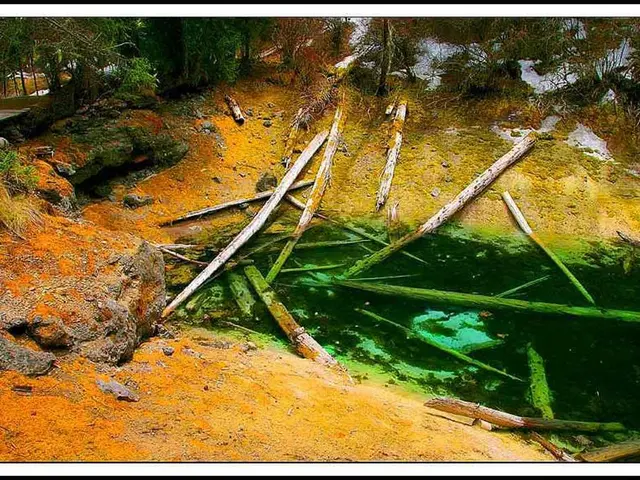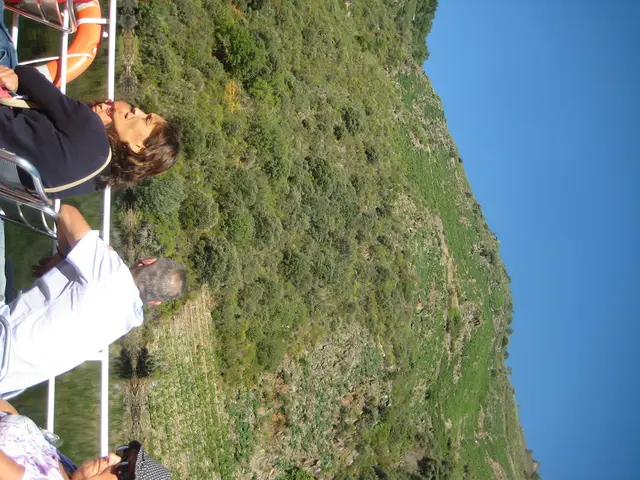Ada Blackjack's Solo Endurance: Survival of a Lone Woman in the Arctic Expedition to Wrangel Island
Lone Survivor: Ada Blackjack's Heroic Ordeal on Wrangel Island
In the eternal frost of Wrangel Island, Ada Blackjack, an Inuit woman from Alaska, not only endured but thrived amidst the harsh Arctic conditions for 703 days, including 57 days in solitude. Born in 1898, Blackjack's life was marked by hardship and resilience, as she battled hunger, illness, and loneliness in the most extreme environment imaginable.
Ada's early life began in an Inuit settlement in Alaska, where she lost her father at a young age and was sent to a Protestant school in Nome. Since her mother could no longer provide for her, Blackjack was forced to learn English, prepare 'white people's food,' and eke out a meager existence. A child marriage to a dog sled driver left her with little more than her son, whom she had to place in an orphanage due to her lack of means. Desperate to support her child, Blackjack took on manual labor jobs, cleaning homes and sewing clothes for miners.
The opportunity to reclaim her son's custody came in 1921, when Ada learned of an upcoming polar expedition led by Canadian explorer Vilhjalmur Stefansson. Enticed by the prospect of financial stability, Blackjack agreed to join the expedition as a seamstress and cook. Although Stefansson promised her $50 a month, this would prove to be far short of the funds needed for her son's care and treatment.
Another motivation for Blackjack's participation was the sight of a chance to challenge the dangerous, yet inviting Arctic, as Stefansson promoted the idea of a 'hospitalitable Arctic.' Despite the skepticism of other polar researchers, including Roald Amundsen, Stefansson pressed on, declaring the island positively safe for human habitation. In fact, he even believed that the Russian Empire's territorial claims might be challenged due to the ongoing political crisis caused by the Bolshevik coup.
Despite her lack of experience in the Arctic wilderness, Ada was chosen for the expedition because of her skill in cooking familiar food for whites and her ability to sew well. Although Stefansson himself did not participate, the group set sail in September 1921, including Ada and four young researchers, none of whom were Inuit. With insufficient knowledge and skills to survive in the icy wilderness, the team would soon find its fate entwined with that of their unlikely companion.
Upon arrival at Wrangel Island, the group raised the British flag and declared it to be a possession of the British Crown, in line with one team member's citizenship. However, things quickly turned south as plans for another ship to deliver provisions were scrapped when it couldn't break through the ice. Left to fend for themselves, the team would endure a difficult struggle for survival. Relations among the group and Blackjack grew strained as food became scarce, with her colleagues often taking her meals and even threatening violence.
In January 1923, the situation worsened as two researchers attempted to reach the mainland for help, only to return sick with scurvy. A month later, three healthier team members tried again, leaving Ada to tend to the ill man. Struggling to carry out four men's work, caring for the sick, and contending with an increasingly hostile expedition team, Ada feared for her life. And when the last team member died of scurvy on June 23, her worst fears were realized - she was completely alone, save for the ship's cat who had stayed with the group.
Refusing to accept her fate, Ada adapted quickly to her new environment. She learned to shoot and set traps for foxes, reinforced her tent with driftwood, and built a watchtower to keep watch for polar bears. Displaying an incredible spirit of resilience, Ada continued the expedition diary and even taught herself to use a camera to document her harrowing journey.
More than two months later, on August 20, 1923, the rescue ship "Donaldson" arrived, overwhelming Ada with its presence. The rescuers found her beaming with a single photograph of her son to show for her incredible 1,895 days on the isolated island. The world soon learned of her incredible story, as Ada became known as a real-life Robinson Crusoe. Yet, the heroine's troubles were far from over.
After her rescue, Ada faced criticism for her care of the ailing team member, as well as allegations of mismanagement of funds. Despite these challenges, she was eventually able to retrieve her son from the orphanage and bring him to Seattle for treatment. Ada's life continued to be marked by hardship and heartache, but she persevered, becoming a reindeer herder in Nome and passing away in 1983. Her gravestone bears the simple yet profound inscription, "Heroine - Wrangel Island Expedition."
Although Ada Blackjack's story is one of remarkable resilience and triumph over adversity, it also serves as a sobering reminder of the harsh realities of the Arctic wilderness and the human urge to conquer and explore - often at great cost.
Ada Blackjack's adventure-travel in the harsh Arctic wilderness of Wrangel Island, marked by 703 days of survival, showcased her lifelong personal-growth and remarkable resilience. Her lifestyle, influenced by her early home-and-garden experiences in an Inuit settlement and Nome, prepared her for the challenges of cooking and sewing during the polar expedition. In her later years, she focused on education-and-self-development as a reindeer herder in Nome, demonstrating that her lifestyle began with, and continued through, her travel experiences.








